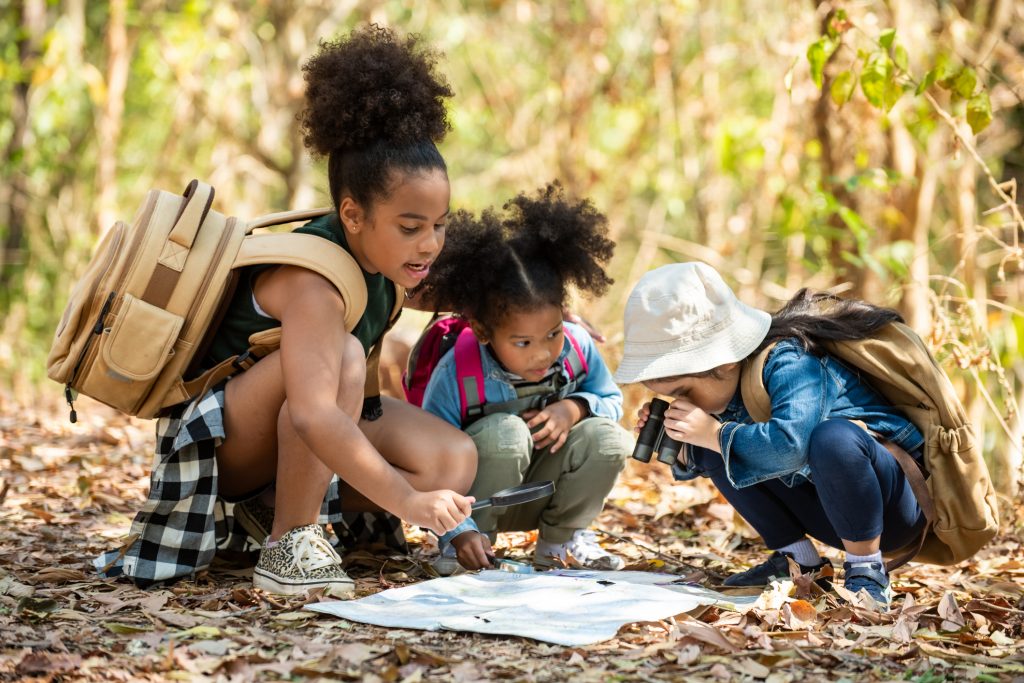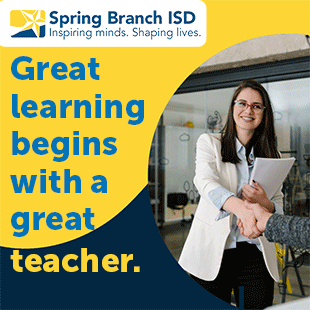

Chasing the Gingerbread Man around the halls of my elementary school was the experience that made me fall in love with reading. Our class had just finished a book about him, and all of a sudden, there he was, inviting us to chase him. Looking back, it’s clear how much my teachers cared about us; it must have taken some cajoling and coordination to get a colleague to dress up in that silly costume and get chased by dozens of kindergarteners. But it brought the book to life. Realia is an unbeatable tool of pedagogy for language teachers. It grounds lessons in the physical experience. My favorite memories of learning were field trips, messy lab experiments, and conversations with playmates. Realia can even be a tool of radical pedagogy through critical artifactual literacy. Realia is a category, while artifacts are specific instances. The epistemology of artifacts, whether digital footprints, physical spaces, or palpable phenomena, can provide a linguistic bridge for conceptualizing words, thoughts, and ideas that can transform the educational experience.
One example of this in action is the way that digital classrooms embody and perform language differently from physical ones. As educators balance the rapidly evolving technology of learning with classical pedagogy, we can harness artifacts as a familiar terra firma. Artifactual critical literacy “is an approach that combines a focus on objects, and the stories attached to them, with an understanding of how different stories have different purchase in particular locations” (Pahl and Rowsell, 2011, p. 129). In today’s classroom, these techniques can highlight and even disrupt power structures, propelling the kind of sophisticated and nuanced discussions every educator hopes for.
A digital space can still be analyzed and questioned; what emojis are you using in the chat box to gauge engagement? How do you model professionalism when your screen is an intimate look into your personal homelife? These are conversations we’ve been having over the last year, and they offer a glimpse into what the future of education could look like.
If you’re in an educational rut, stuck because you want to be a transformative teacher with impactful lessons but completely overwhelmed with the weight of bureaucratic expectations or the transition to virtual learning, a reframe of the situation might help. When we talk about the science of knowledge transference, we know that learning is multifaceted. Play, storytelling, and hands-on experience are some of the best tools of pedagogy because they feel natural. Play helps children make sense of their surroundings (Larson and Marsh, 2014). Storytelling itself can be activism because it encourages nontraditional discourse in the classroom (Anzaldua, 1987). And using artifacts can “anchor students in their own learning process, making them active investigators for, instead of passive receivers of, information” (McKoy, 2010, p. 73). For example, when I wanted my students to feel more comfortable sharing their short stories, I got crafty. I puffed up brown paper lunch sacks and added construction paper fire logs and flames, and then I bought a pack of marshmallows for students to skewer and “roast” while they shared their stories around the campfire. It was nostalgic, which is why I had higher engagement and participation than ever. My experience with artifactual critical literacy comes from the perspective of autoethnography. As a doctor of education, I used this methodology to sculpt my nontraditional dissertation, where I argued that storytelling is a tool of radical pedagogy that enables decolonization and improvement of one’s teaching practices. I’ve used it in workshops geared toward young writers at Voces at the National Hispanic Cultural Center, as well as in a University of Connecticut conference for teachers in that awkward caterpillar stage we call preservice. That’s what is so powerful about this “show and tell” concept: it can be used for every age, because every person can benefit from it. But selecting artifacts is a skill; there is a framework for choosing realia that propels conversation and paradigm shifts.
First, begin with the end in mind (Wiggins and McTighe, 2008). What do you want students to get out of the lesson or unit? Using backwards design can help us figure out the best tools for the job. For instance, if the goal is to practice new vocabulary, we can set up the classroom with objects that invite conversation. But if the goal is to dig deep and make personal connections with the material, we might ask students to bring in an object that symbolizes a theme of the unit we’re working on. Best practices are not slapdash; teaching is a performance that needs quite a bit of forethought so that it goes off without a hitch.
There are a few guidelines for helping students analyze artifacts, including digital footprints and physical spaces, as a springboard for multimodality in their literacy. Educators can choose to focus on the five senses, which is more approachable for younger children, or go deeper by asking about function, modes of expression, or even what an object says about power relations. Modeling how to critically engage with artifacts through interrogating and examining is key so that objects don’t simply become props in the classroom, regardless of the guidelines you choose.

Here are some practical ways to engage in this methodology in the classroom, be it higher education or the early years. Incorporating artifacts and realia can look like:
• A hook to a lesson. Objects can ground or frame our goals for the day, introduce a concept or topic, or inspire an investigation. In Montessori and Reggio Emilia spheres, this is called an invitation to play (Hall, 2010). One example I used when I taught Rudolfo Anaya’s Bless Me, Ultima (1972) was starting the unit with some simple tortillas, which are heavily symbolic in the novel.
• A way to highlight commonalities, categories, or cultural bridges. Objects can foster a sense of familiarity, which encourages learners to make connections between their lives and their schoolwork. They can also help students categorize new, unfamiliar objects based on shared traits. This technique is called scaffolding (Vygotsky, 1986). By grouping a washing board with an iron, a clothespin, and a box of laundry soap in one Great Depression-era lesson, I gave the students context so that they were able to deduce what the washing board might have been used for. We segued into talking about how much a washerwoman might make, which led to a lesson on how to budget where we roleplayed as workers in a 1930s small town.
• An anchor for communication. We’ve all had those days where we feel recalcitrant, sheepish, or even mutinous because of outside factors. Using realia can give students support, stability, and confidence on these hard days. The heritage of the Metis Tribe talking stick holds cultural significance and value as an anti-colonial action of resilience and honoring storytelling for the Mi’kmaq people (Williams, 2020). In the same way, teachers can brainstorm how to appropriately and mindfully recreate the ritual of this by using a signifying object that empowers the person holding it to share their story.
• A performance. Acting out how to use a device, pantomiming gestures, or using an object to build tension or surprise students can all be effective ways of reaching students who might otherwise be bored or unengaged (Horning, 1979). A teacher might come to school in a costume that intrigues, delights, or bewilders students. Care must, of course, be taken to avoid the perception of immaturity or juvenile curriculum at the high school or college level.
• Scaffolding for an article or story. When the curriculum skips over the unfamiliar, it does a disservice to students. Articles, stories, and all forms of communication can be explored in more depth when students become familiar with the setting, items, or subjects. For example, when I taught rhetoric using a 1920 Hemingway article on cooking, I brought in a heavy glass bottle that he describes using to roll out some dough for a pie. It enriched the experience because students who had never baked a pie suddenly understood the subtleties involved. They were also able to take their comprehension a step further; comparing Hemingway’s technique to a traditional rolling pin helped them critique the gendered layer to his writing. My students critiqued why Hemingway was so opposed to the ubiquity of the rolling pin and why he championed using the more masculine liquor bottle in pie-baking.
• A way to learn new vocabulary. In one school in Spain, students made multimodal, bilingual self-portraits that formed a museum of work that was itself “a metaphor of the culturally sustaining pedagogy” (Villacañas de Castro et al., 2021, p. 69). This lesson taught them words for materials and action verbs that described their artistic techniques, but it also allowed them to foster a sense of pride and an opportunity to socialize about their work, which in and of itself is a language-rich activity.
• A tool of social justice. Lessons become more impactful for students when they can respectfully experience historical events. Seeing the stocks that a criminal might have been locked into during a lesson on the idiom “laughing stock” will certainly make an impact, perhaps even leading to a conversation on humanity and prison abolition. Policy makers can recognize the myriad ways a professional educator might apply these concepts; this work is almost certainly happening in schools around the world already, but having the research and vocabulary to describe critical artifactual literacy can help to legitimize it and build it as a skill of pedagogy.
References
Anaya, R. (1972). Bless Me, Ultima. Grand Central Publishing.
Anzaldúa, G. (1987). Borderlands/La Frontera: The New Mestiza. San Francisco: Spinsters/Aunt Lute.
Hall, K. (2010). Loris Malaguzzi and the Reggio Emilia Experience. Continuum International Publishing Group.
Horning, A. (1979). “Teaching as Performance.” Journal of General Education, 31(3), 185–194. http://www.jstor.org/stable/27796766.
Larson, J., and Marsh, J. (2014). Making Literacy Real: Theories and Practices for Learning and Teaching. SAGE Publications.
McKoy, K. (2010). “Realia: It’s not just about field trips anymore.” Social Education, 74(2), 73–112.
Pahl, K & Rowsell, J (2011) Artifactual Critical Literacy: A New Perspective for Literacy Education Berkeley Review of Education. https://escholarship.org/uc/item/6s0491j5
Varga-Dobai, K. (2015). “Responding to Literature through Storytelling, Artifacts and Multigenre Writing Practices: Explorations of cultures and self.” Literacy, 49(2), 77–83. https://doi.org/10.1111/lit.12032.
Villacañas de Castro, L., Cano Bodi, V., Hortelano Montejano, A., Giner Real, C., Gómez Pons, I., Mesas Tomás, B., Sanz Martínez, C., and Tortosa Gozálvez, C. (2021). “Matter, Literacy, and English Language Teaching in an Underprivileged School in Spain.” TESOL Quarterly, 55(1), 54–79. https://doi.org/10.1002/tesq.572.
Vygotsky, L. S. (1986). Thought and Language (A. Kozulin, ed., trans.). Cambridge, MA: MIT.
Williams, T. (2020). “Passing the Talking Stick: Resilience-Making through Storytelling.” Girlhood Studies, 13(2), 134–136. https://doi.org/10.3167/ghs.2020.130212.
Dr. Bunny McFadden is a language arts educator who focuses on decolonizing pedagogy through autoethnography. She has been published in SIETAR and the Journal of Sustainability Education, in addition to holding conference talks with organizations such as the Assembly for the Teaching of English Grammar. She has an upcoming chapter in the book It Takes a Village: Academic Mothers (2023). Her website is docbunny.com.





